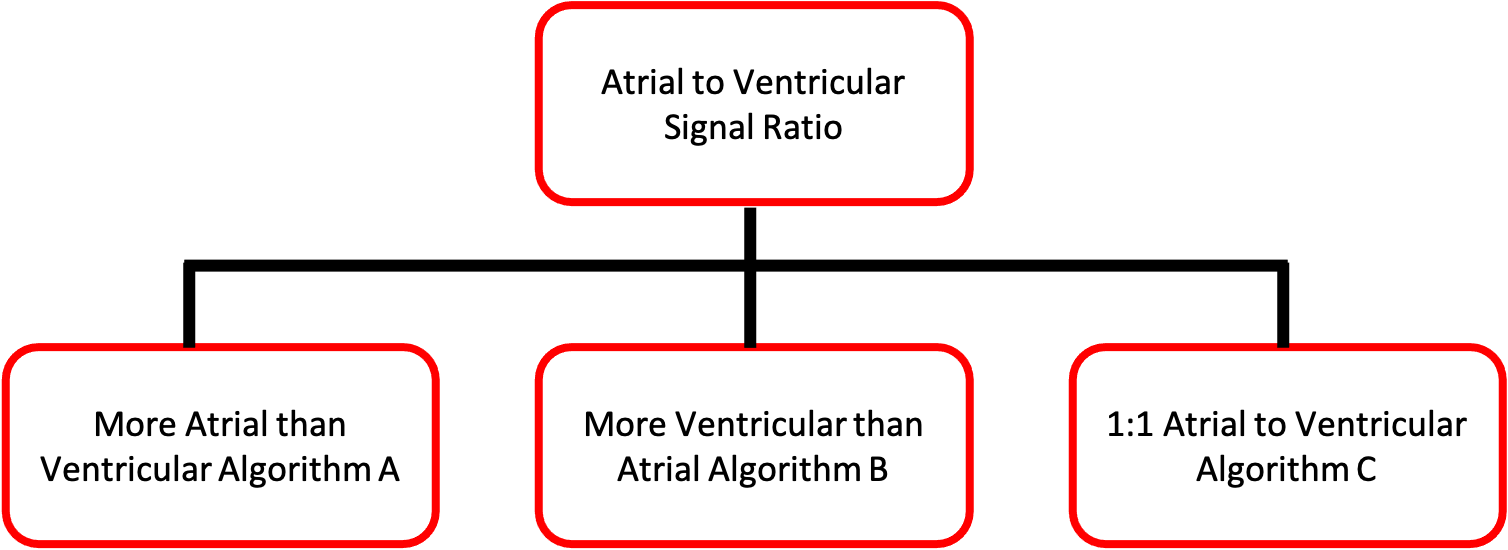After identification of the atrial and ventricular signals as described in the prior section, the next step is to determine the ratio of atrial and ventricular signals.
Tachyarrhythmia can be classified by which chamber is “driving” the rate. If there are more atrial signals than ventricular signals the tachyarrhythmia is atrial driven, such as atrial fibrillation, intra-atrial reentrant tachycardia (atrial flutter), atrial ectopic tachycardia (AET) or sinus tachycardia.
Similarly, if there are more ventricular signals than atrial signals the rhythm is ventricular driven, such as with ventricular tachycardia or junctional ectopic tachycardia. Rhythms that demonstrate a 1:1 atrial to ventricular ratio can be more challenging to diagnose as they can be atrial or ventricular in origin or have a reentrant circuit through both chambers.
Step 1: Identify the ratio of atrial and ventricular signals.
